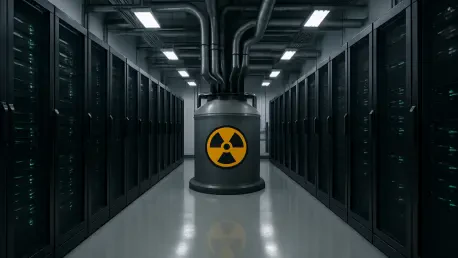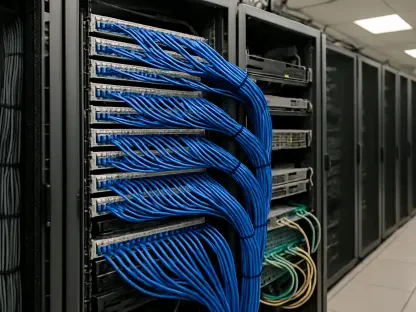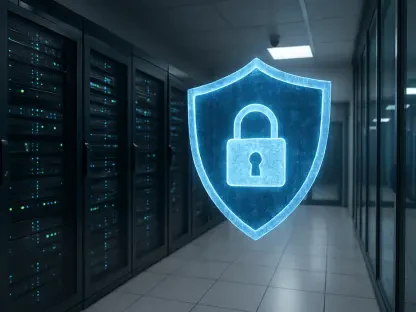In an era where digital infrastructure powers everything from artificial intelligence to cloud computing, a staggering statistic emerges: data centers worldwide consumed 176 terawatt-hours (TWh) of electricity in 2023, with projections estimating a surge to between 325 and 580 TWh by 2028. This explosive growth, fueled by the insatiable demands of AI workloads, underscores a pressing challenge—finding sustainable, reliable energy sources to keep the digital world running. As tech giants scramble for solutions, nuclear energy, often sidelined due to historical safety concerns, is reentering the spotlight as a potential game-changer. This analysis dives into how nuclear power is trending as a viable option for data centers, promising carbon-free stability in a world increasingly conscious of environmental impact.
The Rising Demand for Sustainable Power in Data Centers
Energy Consumption Surge and the Quest for Carbon-Free Alternatives
The energy appetite of data centers has grown dramatically, driven by the proliferation of AI applications and expansive cloud services. Industry reports indicate a sharp rise in electricity usage, with consumption expected to more than double within the next few years. This relentless demand places immense pressure on existing grids, often reliant on fossil fuels, and highlights the urgent need for consistent, baseload power that can operate around the clock without interruption.
Renewable energy sources like solar and wind, while critical to sustainability goals, face limitations due to their intermittent nature. Solar panels generate power only when the sun shines, and wind turbines depend on favorable weather conditions, making them less ideal for the constant needs of hyperscale facilities. Nuclear energy, with its ability to deliver steady, carbon-free power, is gaining attention as a complementary solution, especially among major tech players seeking to balance growth with environmental responsibility.
This shift toward nuclear power reflects a broader recognition of its potential to address both energy stability and climate goals. Unlike renewables, nuclear plants can operate continuously, unaffected by external conditions, positioning them as a cornerstone for future-proofing digital infrastructure. As this trend gathers momentum, it becomes clear that innovative power solutions are no longer optional but essential for the tech industry’s evolution.
Real-World Implementation: Google’s Trailblazing Nuclear Deal
A landmark example of this trend is Google’s strategic partnership with the Tennessee Valley Authority (TVA) and Kairos Power to power its data centers using advanced nuclear technology. The collaboration focuses on the Hermes 2 Plant, located in Oak Ridge, Tennessee, which employs a Generation IV non-water-cooled reactor design. This initiative marks a significant step in integrating cutting-edge nuclear solutions into commercial tech operations, setting a precedent for others in the sector.
The Hermes 2 reactor stands out due to its innovative features, utilizing molten fluoride salt as a coolant instead of water, operating at atmospheric pressure, and incorporating TRISO fuel—microscopic uranium particles encased in protective layers to prevent meltdowns. These advancements drastically enhance safety by eliminating risks associated with traditional nuclear designs, reducing the need for costly containment structures, and addressing public apprehensions about nuclear power.
Scheduled to deliver an initial output of 50 megawatts by 2030, with potential scaling to 500 megawatts by 2035, this project demonstrates nuclear energy’s practical applicability for hyperscale data centers. Google’s commitment to this technology not only addresses its energy needs in regions like Tennessee and Alabama but also signals a broader industry shift toward embracing nuclear power as a reliable, sustainable option for meeting escalating demands.
Industry Perspectives on Nuclear Energy for Tech Infrastructure
Industry analysts view nuclear energy as a strategic asset for ensuring energy stability in data centers, particularly as digital workloads intensify. Sanchit Vir Gogia of Greyhound Research emphasizes that nuclear power offers a unique advantage in providing uninterrupted baseload energy, a critical requirement for facilities running AI and cloud computing operations. This perspective underscores the growing alignment between technology and advanced energy solutions, positioning nuclear as a key enabler of tech expansion.
Experts also highlight the safety and cost benefits of modern nuclear designs, such as Generation IV reactors, which mitigate historical concerns through innovative engineering. However, challenges remain, including lengthy licensing processes and extended construction timelines that can span a decade or more. These hurdles suggest that while the technology holds immense promise, its integration into mainstream use will require patience and substantial investment, often beyond the reach of smaller players.
The trend of hyperscalers investing in nuclear energy could further deepen competitive divides within the tech industry. Analysts note that companies with the resources to fund such projects may gain advantages in energy reliability and pricing stability, potentially reshaping market dynamics. While this raises concerns about accessibility, it also sparks discussions on how collaborative models or policy interventions might level the playing field, ensuring broader benefits from nuclear advancements.
Future Outlook: Nuclear Energy’s Role in Digital Expansion
Looking ahead, Generation IV reactors hold the potential to become a mainstream energy source for data centers beyond the next decade, provided regulatory and scaling obstacles are addressed. Their ability to deliver consistent power aligns perfectly with the tech industry’s needs, offering a level of predictability that fluctuating grid prices and renewable intermittency cannot match. If successful, this could redefine how digital infrastructure is powered on a global scale.
Yet, significant barriers persist, including high initial costs and community resistance to nuclear projects, which may limit adoption to well-funded hyperscalers. Smaller enterprises, lacking the capital or influence to navigate these challenges, might remain dependent on less stable energy sources, potentially widening existing disparities. Balancing innovation with equitable access will be crucial to ensuring that nuclear benefits extend beyond a select few.
The broader implications of nuclear-backed energy stability could ripple through the tech sector, influencing cloud service pricing and sustainability commitments. Reliable power might enable more competitive offerings from major providers, while also supporting ambitious carbon-neutral targets. However, the risk of delayed adoption timelines looms large, suggesting that stakeholders must remain agile, exploring interim solutions while advocating for streamlined regulatory frameworks to accelerate nuclear integration.
A Transformative Yet Challenging Energy Frontier
Reflecting on this emerging trend, it is evident that the surge in data center energy demands has pushed the boundaries of traditional power solutions, prompting innovative responses like Google’s pioneering nuclear partnership with TVA and Kairos Power. Expert insights have revealed both the immense potential and the practical limitations of advanced nuclear technology, while the future outlook paints a picture of cautious optimism amid scalability challenges.
What stands out from this analysis is the transformative possibility nuclear energy holds for sustainable tech infrastructure, despite the hurdles of cost and public perception that have slowed its widespread embrace. Moving forward, stakeholders are encouraged to closely track advancements in reactor designs and advocate for collaborative frameworks that can distribute the benefits of nuclear power more evenly across the industry, ensuring that innovation does not come at the expense of accessibility.









